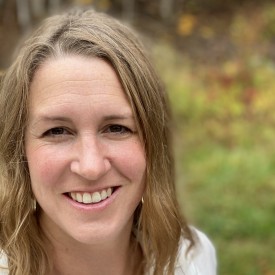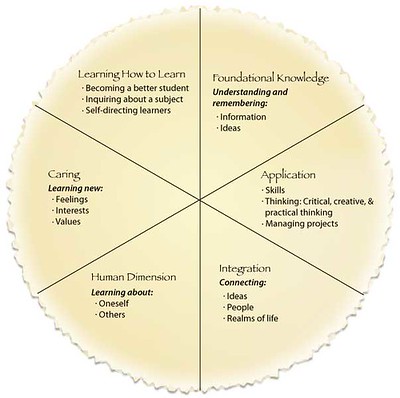Working with her students in an exercise physiology course, Professor Andrea Corcoran faced an unusual problem. She was teaching her students about body composition. Body composition is a term used to describe the relative amounts of muscle, bone, and fat in a person’s body. It is used, among other things, to determine whether someone is “overweight” and to what extent. Body composition can be assessed by using a caliper to measure a fold of skin; the measurement is then run through an equation to produce the percent body fat (%BF). %BF is a useful index as both too little and too high amounts of it pose health risks because the body needs a certain amount of fat for normal physiological functions.
She was working on a “hands-on” project in class. The students were using a caliper to measure their own %BF. In the middle of the activity, Professor Corcoran noticed that some students in the back of the room were seeming to get off task. So she made her way to the back to get them directed on the course work. It turns out that they were puzzling through the problem and were stumped.
The students had used the caliper and now had to use their textbook to look up the appropriate equation. It so happens that very recent research has determined that clinicians should take many factors into account when determining %BF from skin folds, including race and ethnicity. In this case, there was no equation listed that was suitable for this particular student: “there’s no equation here for me,” he said. And so, Professor Corcoran is now working with her students to develop new, more suitable equations for different racial and ethnic groups. This is part of Professor Corcoran’s broader research agenda that blends knowledge making, community engaged scholarship, and practical training in skills that students will use in their future workplaces.
If you get a chance to walk around the NAS Research Fair this spring and take in all of the different kinds of research going on in the Natural Sciences Department, it will soon become apparent that Castleton’s students are widely engaged with making knowledge in service of Vermont’s communities. For Professor Corcoran, this kind of engaged scholarship is just a part of what she always does in her research projects.
For a recent research task, for example, her students went out into the community to survey residents about their use of CBD, cannabidiol found in cannabis. The students were investigating an emerging trend: researchers are finding that CBD use tends to be higher in rural communities than it is in urban ones. The thinking is that it is used more heavily in places where it is more difficult to get direct medical care, perhaps as a substitute measure. Professor Corcoran and her students were trying to test this idea by conducting surveys. The aim was to raise awareness about this emerging trend in public health practices.
This community engaged work runs hand-in hand with the ways in which she promotes what we might call “career readiness”, both in the work of her classes and also in opportunities she creates for students outside of the classroom. In the CBD study, for example, the researchers were practicing a variety of interpersonal skills as well as data analysis. In other studies, her students learn clinical testing skills, such as how to take blood pressure or heart rate, and all the facets of professionalism that come from working with community members in their care. Professor Corcoran’s students also present their research nationally. One student aspiring to attend medical school was the first presenter of a poster at the national conference of the American Society for Physiologists. Another is presenting at this year’s American College of Sports Medicine conference and authoring a journal article for the Journal of Primary Care & Community Health. All of this is possible thanks to the generous support and funding from the Vermont Biomedical Research Network (VBRN) and NIH.
Professor Corcoran’s dream is to open a state-of-the-art testing facility that can be used both for research and in service to the community. The dream is actually a plan not very far in the future, if she can acquire the necessary grant funding. As a centerpiece, it will feature a piece of equipment known as the Bod Pod. This large, egg-shaped fiberglass chamber is the gold standard for precise %BF measurement. It will be the first facility in the state of Vermont that would provide this body composition testing and other specialized diagnostic services. In this and other initiatives, Professor Corcoran’s students will play a central role, assisting in the delivery of services to the community and analysis of what they learn from the experience as well as the data.



